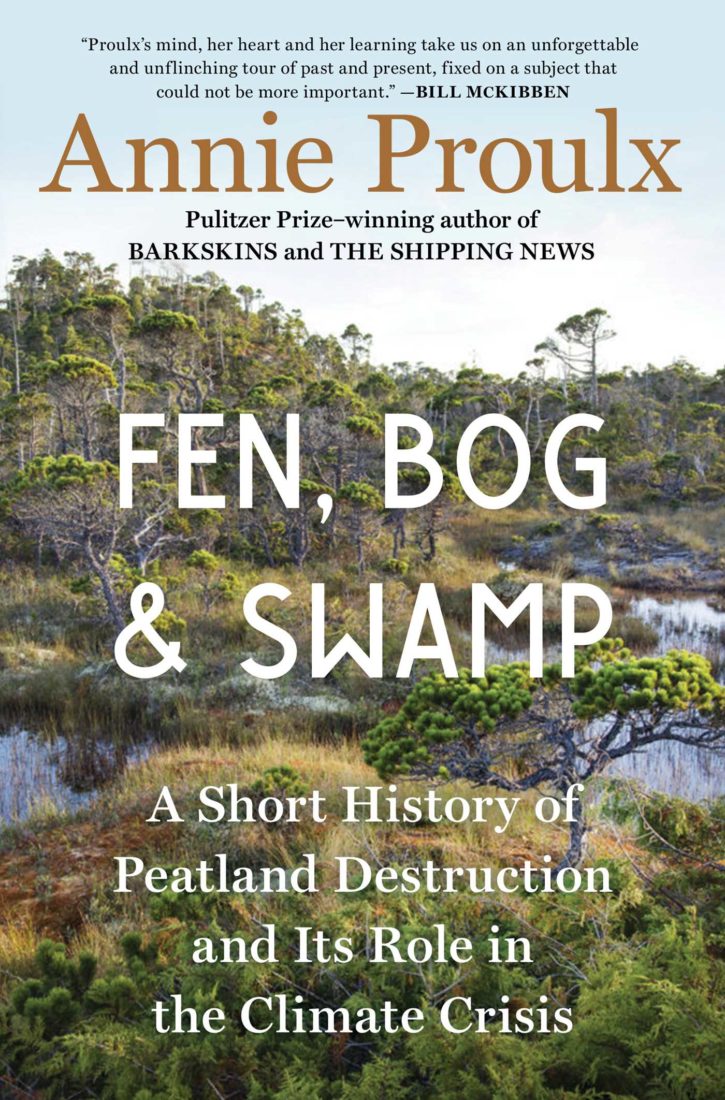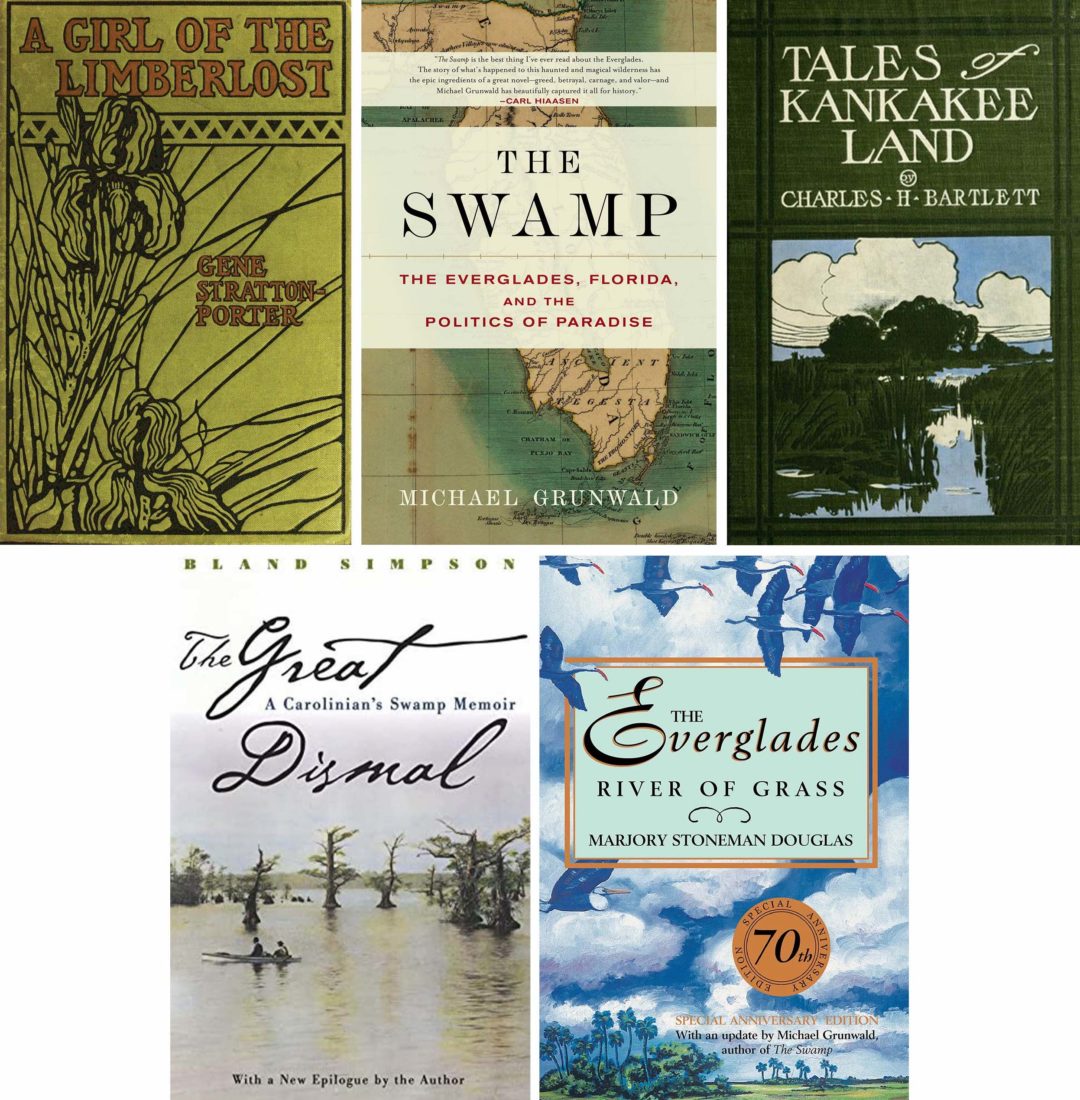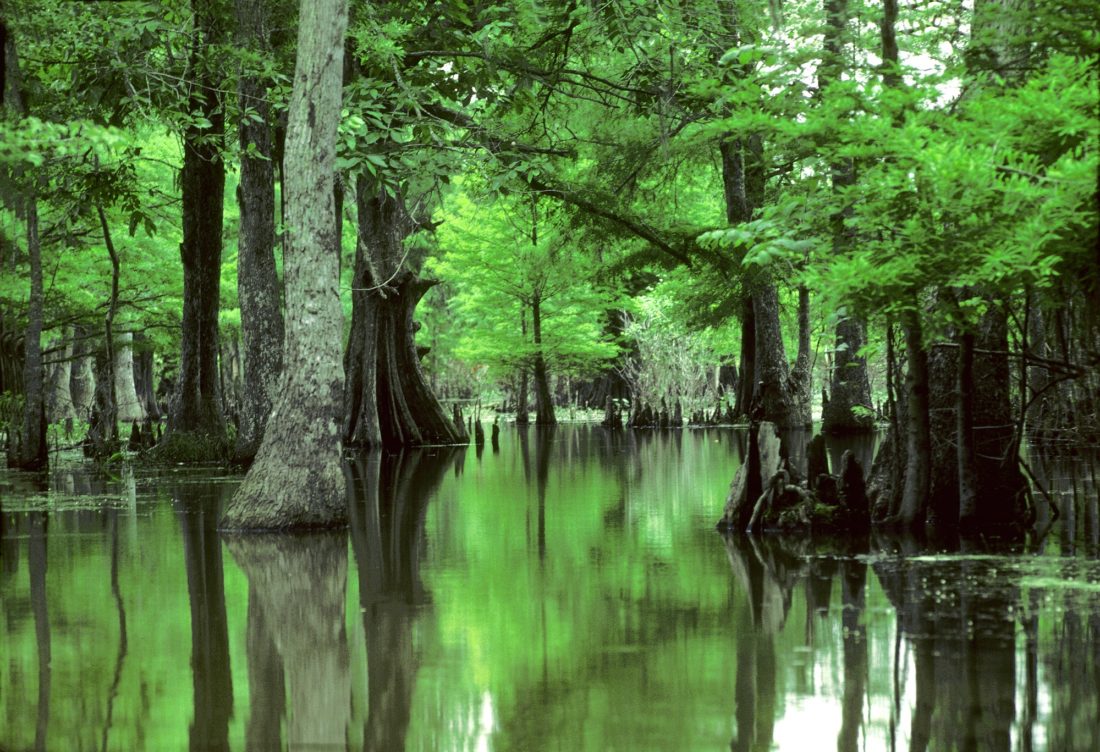
In the opening pages of the writer Annie Proulx’s captivating new book, Fen, Bog & Swamp, she gives the definition of each of these related words: A swamp is a “peat-making wetland dominated by trees and shrubs,” she writes. “Its waters tend to be shallower than those of fens and bogs.” Proulx, perhaps best known for her novel The Shipping News and her short story turned Academy Award–winning film, Brokeback Mountain, goes on to describe fens in England, bogs across the world, and the importance of a few Southern swamps, including the mangrove swamps in Florida. “The country’s most famous swamp is known by the morbidly romantic name ‘Great Dismal,’” she writes. It once covered more than two thousand square miles of Virginia and North Carolina, but 175 wilderness miles now make up the Great Dismal Swamp National Wildlife Refuge.
Among her powerful descriptions of the importance of peatlands for conservation, a thread winds through—the absolute hold swampland has held on some of the best nature writing, both fictional and non. She calls out literary favorites such as A Girl of the Limberlost, as well as the work of naturalist writers William Bartram and Henry David Thoreau. We chatted with the writer to learn more about her book and to round up her required reading list for lovers of Southern swamps.

You write about Florida’s mangroves in the book—why are mangroves so important?
Because they protect the land’s edge from rising seas and because they are major absorbers of carbon dioxide. They are prime habitat for hundreds of both near-shore marine and land animals—amphibians, fish, mammals, reptiles. Their dense twisted arms and foliage offer privacy and safety to breeding birds; their entangled roots are places of survival for small fish. Snappers, tarpon, sea trout, red drum, and many more fish first experience life in mangrove nurseries. In India even some tigers inhabit the mangrove forests. For a quick look at mangrove inhabitants, watch this.
Who are some of your favorite advocates/authors who write about Southern swamps?
This could be a long, long list, but some not-to-be-missed books for readers would be Marjory Stoneman Douglas’s 1947 The Everglades, River of Grass. It was commissioned by Constance Lindsay Skinner, the editor who first came up with the Rivers of America series which eventually contained sixty-five titles. Ms. Skinner very much wanted Douglas’s work in the series, but the Everglades was not really a river. They cleverly finagled the subtitle, “River of Grass.”
Charles H. Bartlett’s 1907 Tales of Kankakee Land is a collector’s item today. It is a lyrical evocation of the time-misted million-acre wetland’s ancient character and its long-gone early inhabitants. A lively reading adventure is Bland Simpson’s The Great Dismal: A Carolinian’s Swamp Memoir. A more contemporary look is Michael Grunwald’s highly praised 2006 The Swamp: The Everglades, Florida, and the Politics of Paradise. In swamp literature, the contrast between Bartlett’s Kankakee Land and Grunwald’s Swamp is like a violent slap.
I held the late John V. Dennis, an ecologically minded ornithologist, in high regard. If you are longing for more swamps, his 1988 The Great Cypress Swamps is richly illustrated with Steve Maslowski’s nature photographs. The book is a treasure house of swamp lore, a mind-bending survey of sixty swamps—Southern swamps especially. Not only is The Great Cypress Swamps packed with provocative information about wood ducks as the major disseminator of cypress seeds, it has a consideration of why the silk of the golden silk spider is golden, and the range of the cypress, which extends to examples of a very few bald cypress discovered in New Hampshire and Maine swamps.
Everyone wonders about the purpose of cypress knees, but Dennis felt they anchored the spreading roots of the trees. Chapter five, “Hazards of the Swamp,” is a help for swamp neophytes who fear a swamp’s snakes and insects and wonder how to best get around in a place that is half water. There is a very real possibility of getting lost in a large swamp, and Dennis’s advice to bring a compass and geological survey map with you is good but dated. Today, GPS is invaluable to the swamp traveler.

What do you hope readers take away from your book?
I wish readers would be provoked enough by Fen, Bog & Swamp to discover the soggy peatlands in his or her local neighborhood—and having found some, to understand their condition and health. In some places small bogs are torn apart by ATV riders. Best of all responses would be if a reader found a bog or swamp and went there with camera or notebook often and in all seasons, making a record of what he or she saw, heard, smelled, thought. I would wish for that reader to try and understand how the discovered wetland worked in the general local ecology.








